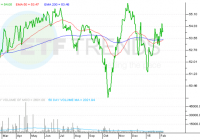Time To Worry About CORN ETF?
Anemic growth in the global economy and lingering concerns over macro uncertainty have dragged down overall agricultural consumption so far this year, hurting corn export sales. A cut in Chinese corn imports brought its share of troubles. And the most important deterrent – a strong U.S. dollar – is making exports expensive. This is bad news since corn is one of the most important U.S. crops and is the most important agricultural product in many states. And overall, the nation enjoys the status of the world’s largest exporter of the staple. The future of the staple doesn’t look very bright given expanding stockpiles and increasing planting given that the corn market is already oversupplied. Per the Agriculture Department report released last week, U.S. farmers are expected to sow 93.6 million acres of corn this year compared with 88 million last year, representing an increase of about 6%. The agency’s report also revealed that corn stockpiles totaling 7.81 billion bushels on March 1 were at the highest level in the past 30 years. Stockpiles were up from 7.75 billion bushels on the same date last year. With corn prices sinking to a nearly three-month low, investor focus is expected to be on the only ETF in the market that targets this important commodity, Teucrium Corn ETF (NYSEARCA: CORN ) . CORN has been down more than 4.1% so far this year (as of April 5, 2016), underperforming the broad agricultural commodity fund PowerShares DB Agriculture ETF (NYSEARCA: DBA ), which was down 2.2% and the equity-based fund SPDR S&P 500 Trust ETF (NYSEARCA: SPY ), which returned over 1.7%. Corn ETF in Detail The fund provides investors a direct exposure to corn. The fund looks to reduce backwardation and contango. The fund looks to reduce contango by spreading out exposure across the curve, as opposed to just rolling over from front month to front month. The fund will be using the second-to-expire contract (35%), the third-to-expire contract (30%), and the December contract that is following the third-to-expire contract (35%). The product is expensive as it charges 2.92% in fees per year, which is steep compared with the average expense ratio prevailing in agricultural commodities ETFs. It trades in moderate volumes of nearly 30,000 shares on an average daily basis that increases the trading cost in the form of a somewhat wide bid/ask spread. The fund has so far attracted $57.2 million in assets. CORN has fallen almost 20% in the last one year. As such, CORN currently carries a Zacks ETF Rank of 4 or “Sell”, indicating that the fund might face significant bearishness in the months ahead. So, for the time being, if investors are looking to play this commodity market, a look to other segments might be necessary. Original post
